Donating blood if you’re coeliac
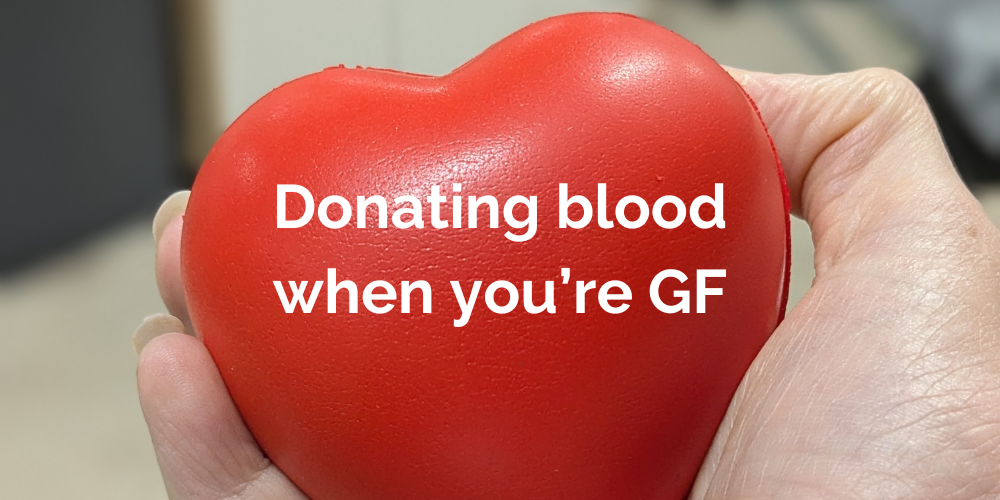
Posted: July 15, 2025 Updated: July 15, 2025
Is donating blood allowed if you’re coeliac? The short answer is yes, but there may be reasons why you can’t, or why you were told you couldn’t at the time of your diagnosis.
I get asked a lot of questions on Facebook and one that has come up a few times is:
“Is donating blood allowed if you’re coeliac?”
This question surprised me the first time, but when I had a think about it I realised there might be more to it.
In this article I’m going to cover two things, a quick bit of info as to why you may or may not be able to donate blood as a coeliac and what donating blood is like if you’re coeliac or on a gluten free diet.
As most of my readers would know, I’m Australian and I currently live in Australia. I’ve donated blood here about 20 times as well as once when I was living in Finland. So I’ll draw on (pardon the pun) those experiences.
Donating blood and a coeliac diagnosis
I’ve had more than one person say to me over the years “When I was diagnosed the doctor told me I couldn’t donate blood.”
Having coeliac disease does not automatically exclude you from donating blood. While some autoimmune diseases do rule out blood donation (such as multiple sclerosis), the cause of coeliac disease is well understood and does not pose a risk to blood recipients.
So why were some people told not to donate? My guess is iron.
As outlined on the Lifeblood website, coeliac disease is a risk factor for iron deficiency. Being iron deficient, having a lower than necessary iron count in your blood, can exclude you from donating blood – temporarily.
Undiagnosed or newly diagnosed coeliacs may have low haemoglobin or iron levels due to malabsorption in their digestive system.
Once on a gluten free diet the gut can begin to heal. As it heals the ability to absorb nutrients improves, increasing the amount of iron the body can absorb.
Generally speaking, a coeliac once on a gluten free diet can have stable haemoglobin and iron levels.
Pre-donation questionnaire and testing
When you attend for your blood donation you answer a ten minute questionnaire. You do this at every blood donation to ensure all your details and history are up to date.
Circumstances change and depending on your recent activity, travel, medical investigations, tattoos etc you may or may not be eligable to donate.
After the questionnaire is completed you are interviewed in a private room by one of the nurses to go through your answers.
In Australia, Lifeblood has an accepted range of haemoglobin levels for donation. Your iron levels will be tested during your pre-donation interview by doing a haemoglobin count.
The test is performed by taking a small sample of blood from your finger and putting it into a machine. It takes about 10 seconds to get the sample and a minute to get the result.
If the sample is within the accepted range you’ll proceed to donating.
Donating blood, plasma or platelets.
I’ve donated whole blood and plasma, I used to donate blood but in 2024 I made the decision to only donate plasma.
I was excluded from donation for six months after my haemoglobin came back too low at an interview. That was around 2010. Since then I’ve had a few instances of low blood iron, so rather than risk depleting my iron stores I’m donating plasma which doesn’t affect my levels.
You can donate blood every three months, plasma and platelets every two weeks.
A whole blood donation takes around 45 minutes in total, with about 15 minutes sitting in the chair.
Plasma donation is longer, you’re in the chair 45 to 60 minutes, so the full appointment takes 90 minutes. Platelet donations take 2 hours, I haven’t done one as they are for male donors only.
One random thing to note with plasma donations and being gluten free. When your blood is returned to you (after they filter out the plasma) they add citrate, an anticoagulant, to your blood. The citrate can give you side effects like tingling in your mouth.
Lifeblood provides Quick Eze chews which have calcium in them which eases the symptoms. There is a little warning sign on the bowl of Quick Eze tablets at the desk saying not to have them if you’re coeliac or gluten intolerant.
However this information is out of date as Quick Eze, according to the manufacturer’s website, only contains soy as an allergen.
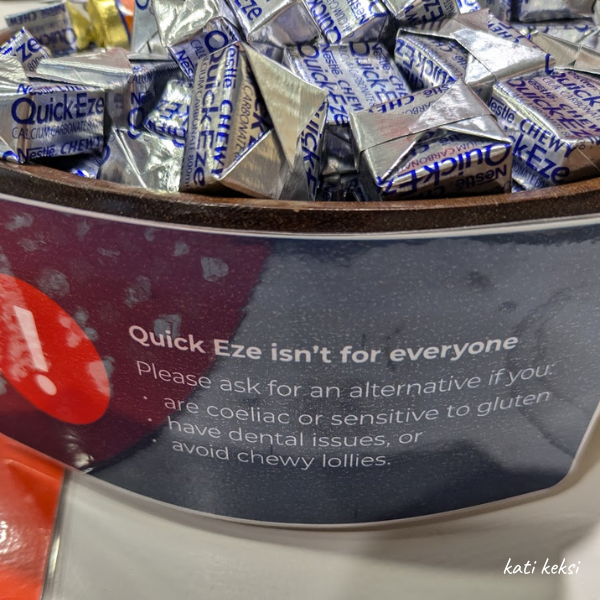
What happens when you are donating
I’ve had one or two people ask for in-depth information as to what donation is like, and given that you might not know someone who has donated then I guess I’m in a good position to tell you.
Here’s a brief overview of what goes on after the interview.
You are set up in a reclining chair, the type with a nice big footrest. It can be elevated and adjusted electronically by the staff. They ask you which arm you’ll be donating from and start to set up the machine (plasma) or collection bag (whole blood).
You’re fitted with a blood pressure monitor, the same you’d see at the GP office. The nurse sterilises your skin and locates a vein for the needle.
The needles are larger than what you’ll see for a blood test, the initial incision hurts but it shouldn’t hurt after that. If it does, you tell the nurse, and they will adjust or remove it.
For whole blood
The needle is a cannula style (so with a tube attached and an outlet). The nurse will collect some blood into tubes first, I believe these go for routine testing / screening. Then your donation begins.
For whole blood there is a collection bag beside you on a little undulating digital scale. It tilts from side to side as your blood naturally flows into the bag.
It takes just 10 – 15 minutes to collect a full whole blood donation.
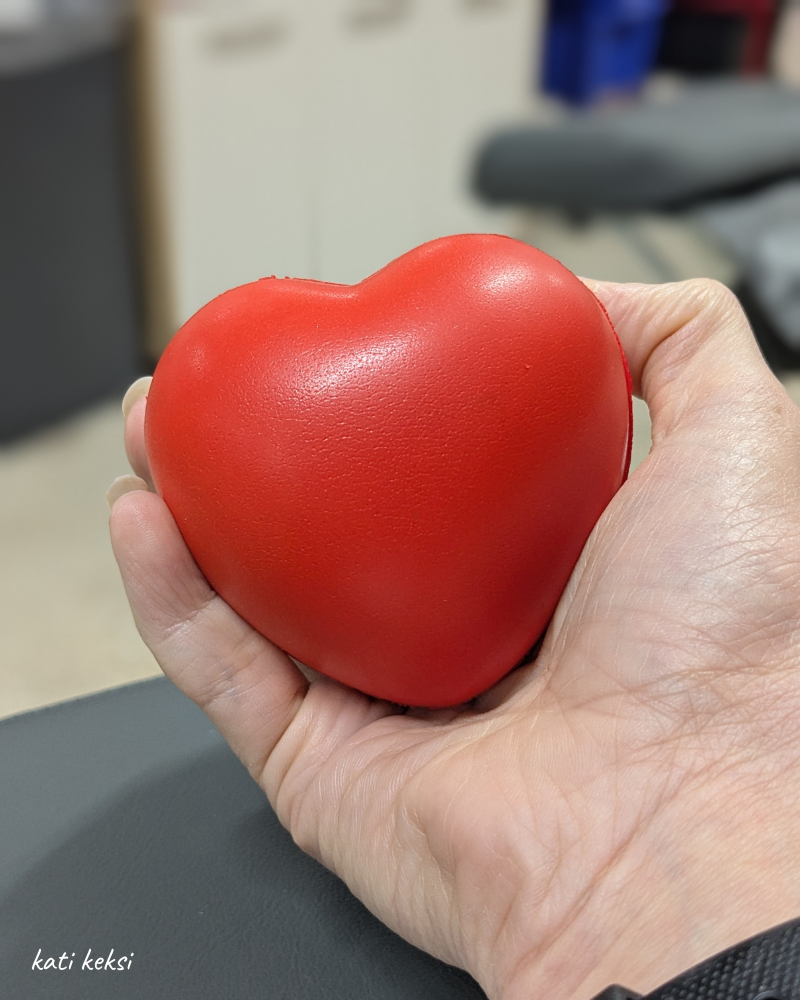
For plasma
Usually when you get to your chair there will be some waiting time while the nurse sets up the machine. They’ll be setting the flow rate as well as the volume to be taken.
The volume of plasma is calculated by weight. You can request during your interview to donate a smaller amount (this may helpful for you if you’ve got narrow veins or a slow flow).
Similar to the whole blood set up, your arm is sterilised and a needle is inserted. I suspect the needle / cannula for plasma donation is slightly bigger. This would be to accomodate the flow of returned blood and fluids to your body.
Samples are taken by the nurse and the machine is checked. At this point I’m offered some heat packs, I’m guessing it’s to help blood flow. But they are also nice to have when you’re sitting on a chair not moving for 45 minutes.
The blood pressure monitor does some work during the process. From what I’ve noticed it’s quite restrictive while taking blood, then relaxes when your filtered blood is returned to you.
The donation goes in cycles of donating blood and receiving it back. From my experience each cycle is about every 100mL or every 8 – 10 minutes. My plasma donation volumes have been 550 – 650mL and taken 45 – 60 minutes.
I tend to listen to an audiobook!
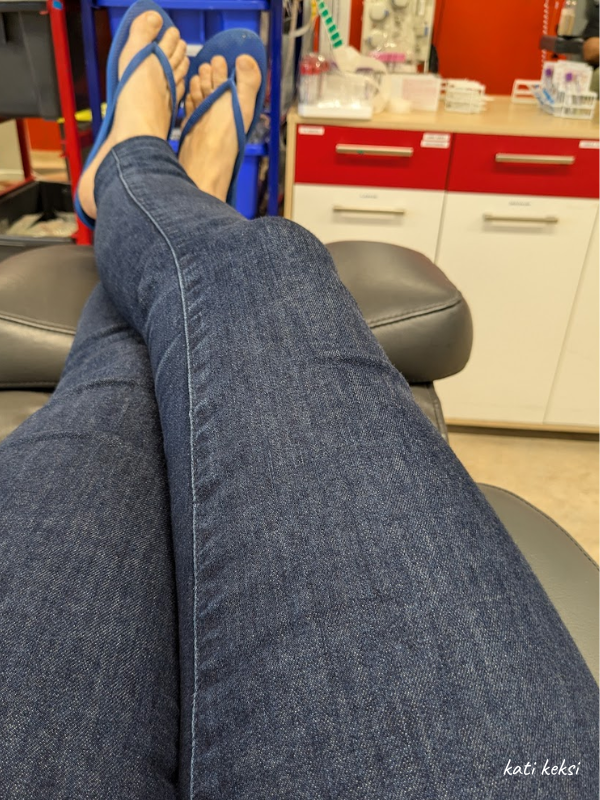
Completing the donation
When you’ve reached your donation volume the machine beeps and a nurse comes over to close the bag up and remove the needle.
After removing the needle the nurse wraps a stretchy bandage around around your arm. The bandage needs to stay on for a few hours, and its recommended you don’t do any heavy lifting for the rest of the day.
The nurse asks how you’re doing, checking for anything like feeling woozy or lightheaded. The chair is lowered back down and you head over to the snack zone.
Post donation
Rehydration, rest, snacks and more snacks!
After your donation you’re asked to take a seat for fifteen minutes and to have a drink and a snack. This is part of the recovery process and a way for folks to keep an eye on you post donation.
But it’s also what a lot of donors see as their little reward!
If you can eat gluten then everything is open to you – people always rave about mini party pies and sausage rolls.
Sadly for coeliacs and gluten free folks we don’t get those but there are plenty of other treats. So to be thorough I’ll cover what I’ve seen available.
Drinks
- Nippy’s flavoured milks (all are GF!)
- Juice boxes
- Coffee / tea (there’s even a coffee machine at some centres)
- Milkshakes*
*Milkshakes seem to be only at some centres. My local one does not have these but in the Melbourne CBD they do, I checked out the syrups and they are all labelled gluten free.
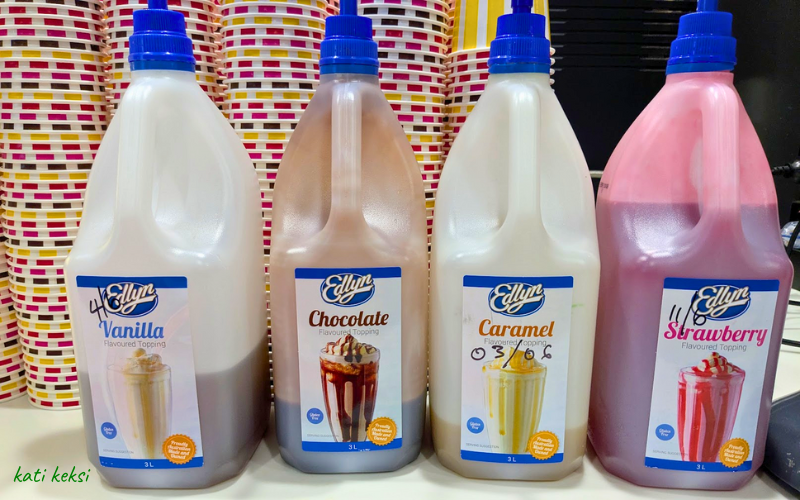
Savoury snacks
- Chips (Woolies, Natural Chip Co etc), Delites
- Popcorn (I’ve seen Woolies and Cobs brand)
- Bega cheese (in individual packets)
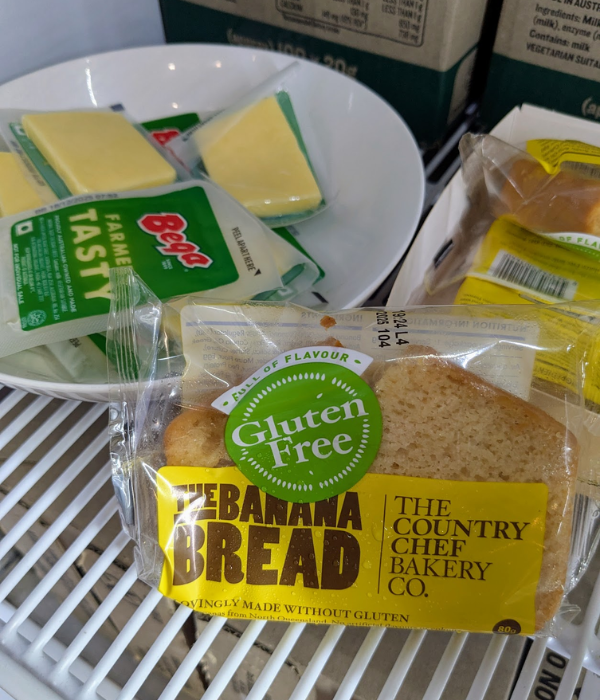
Sweet snacks
- Shortbread
- A bar by Springhill Farm (last time it was rocky road)
- Banana bread (usually hiding in a fridge)
Bonus! The centre I went into in the city one time also had noodle pots! Gluten free noodle pots! They were the Fantastic brand. Great surprise, I’d never seen that at my suburban centre.
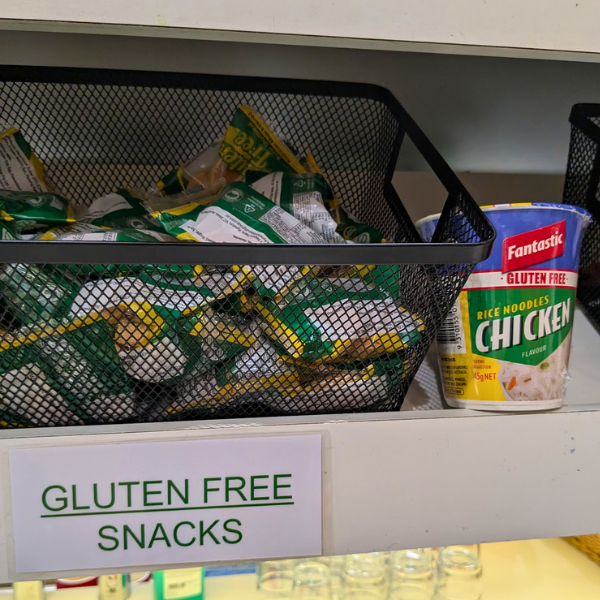
Overall it’s not a bad little haul to tide yourself over or treat yourself. After all, it’s free calories for giving blood? I tend to have a milk while donating plasma (I think it helps with the citrate reaction) and usually some chips or popcorn afterwards. I will occasionally eat banana bread too. 😁
Oh and one year at Easter there were wrapped Cadbury eggs, woohoo!
Bonus! Donating blood in Finland, coeliac snack heaven!
One very different thing about donating blood in Finland is that if you are a woman you can only donate once per year.
Actually I just rechecked this, when I donated (around 2021) it was once a year, now it is two or three times a year.
But fear not, you get enough snacks to cover four donations.
As I understand the logic is that women have lower blood iron levels which are depleted during donation. So for that reason they limit the number of donations per year. On top of that, when I donated I was also given iron supplements to take home with me – brilliant!
The donation process overall was the same, going through a questionnaire with a nurse and having a few checks. Sitting in the chair and chilling out for fifteen minutes before progressing to the recovery zone for a cuppa and a snack.
And oh the snacks.
I donated in Oulu, a small city in northern Finland (see my GF city guide for Oulu!). The recovery area had a kitchenette with coffee, tea and other hot drinks.
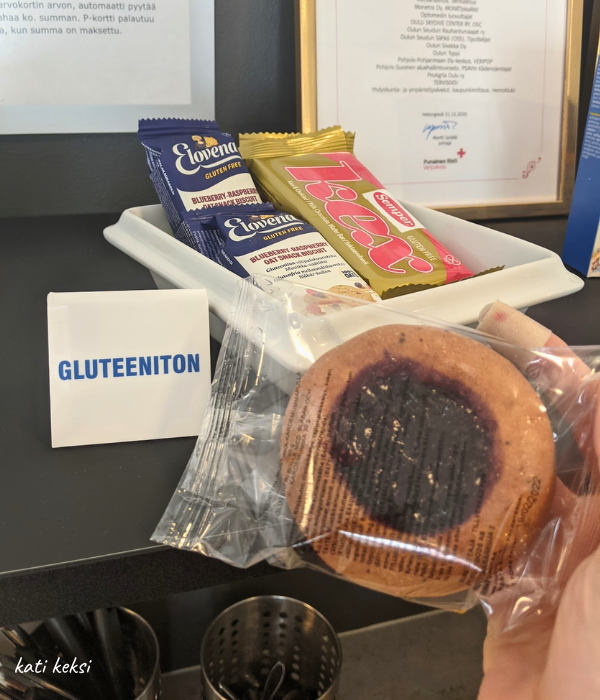
On the savoury side they had sandwiches – including gluten free sandwiches with more than one option! There were also chips and chocolates. One of the staff actually apologised that because summer had just ended they no longer had ice creams, wow!
I decide to have a blueberry pulla (a sweet bun with cardamon flavoured dough and blueberry jam), a coffee and a piece of fruit. I may have left with a little chocolate in my pocket.
Gifts galore
Not that I would donate just for gifts, but Finland’s blood service actually had some gorgeous gifts for donors. There was a grey tea towel with a droplet design, and this really cute coffee spoon (for measuring grounds) that looks like a sauna water scoop.
There’s also a fabric bag that says something like “life saver” (hengenpelastaja) which is handy for groceries.
Australia’s blood bank also has gifts for donors, they are rewarded as you achieve certain milestones. They have beanies, water bottles ad other items, I haven’t taken as I don’t really like the colour red.
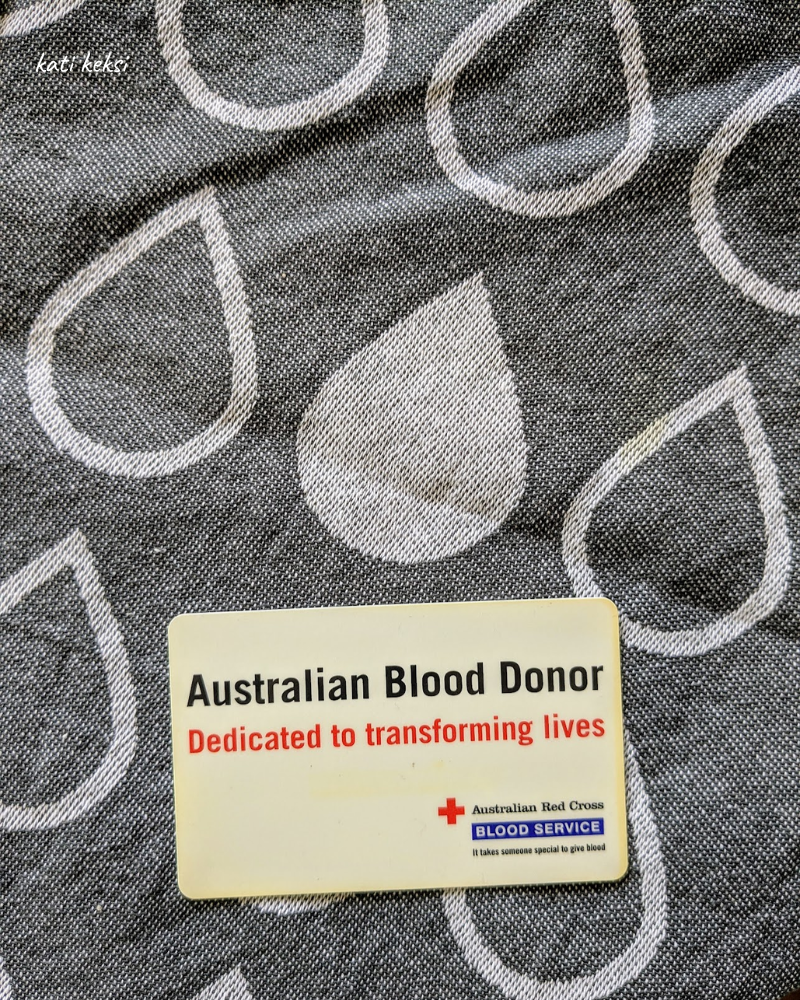
Are you a coeliac ready for donating blood?
Hopefully this article has given you a little bit more insight into donating blood when you’re gluten free. Or maybe just what blood and plasma donation is like.
People don’t really talk about blood donation. Up until a few months ago I only knew (“knew”) one person who donated regularly – my ex boyfriend’s old boss. So yeah, someone I met twice fifteen years ago but it I am still friends with on Facebook. 🤷
But, to this person’s credit, they do a post every time they donate. It’s a great nudge for others to consider donating, or to support people who want to go donate.
I can’t get to a donation appointment unless someone is looking after our daughter. So that means my mother babysits during the day for a few hours, or my husband finishes work early so I can attend an evening appointment.
A lot of the people in my family aren’t eligible or aren’t able to donate, so I feel like I’m representing them when I go. Sounds corny, but it does give me a warm fuzzy feeling.
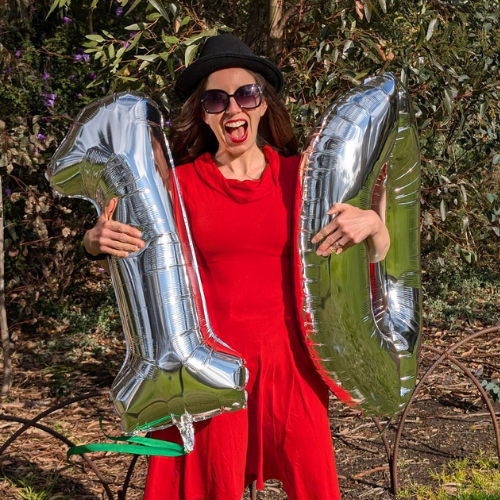
Thanks for reading my post!
Want me to keep writing informative articles like this? Consider Buying Me a Coffee.
No money, no worries! Sharing is caring. Share this article with your friends, family or your local GF Facebook group. It is genuinely a massive help.